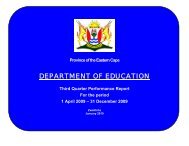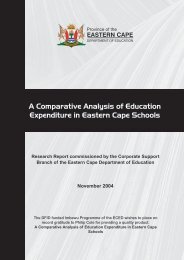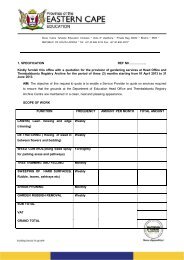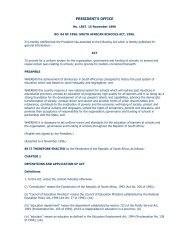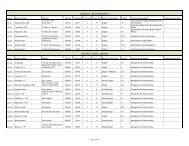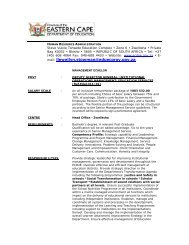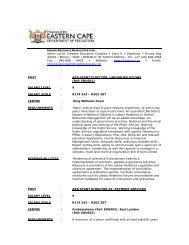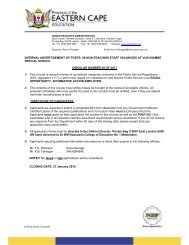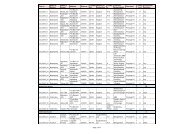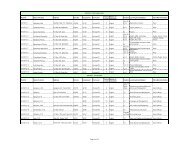(REVISED) POLICY GUIDELINES FOR SCHOLAR TRANSPORT
(REVISED) POLICY GUIDELINES FOR SCHOLAR TRANSPORT
(REVISED) POLICY GUIDELINES FOR SCHOLAR TRANSPORT
You also want an ePaper? Increase the reach of your titles
YUMPU automatically turns print PDFs into web optimized ePapers that Google loves.
5<br />
3.7. The subsidy has been applied for; and<br />
3.9. The availability of a signed transport contract / Service Level Agreement (SLA); and<br />
3.10 Availability of STS data to ensure fairness in the prioritization for the approval of the subsidy;<br />
and<br />
3.11 Learners are prioritized for this subsidy; and<br />
3.12 The appropriate (nearest and suitable) school is attended.<br />
4. THE FOLLOWING MAY APPLY <strong>FOR</strong> THE SUBSIDY<br />
4.1. Learners who live in and attend school in the Province of the Eastern Cape;<br />
AND<br />
4.2.1 Learners who have to walk a distance of 10 or more kilometers to and from school per day<br />
(i.e.5 km one way) if the learner is in Grade 4 to 12 and a distance of 5 or more kilometers per<br />
day if the learner is in Grade R – 3 ( foundation phase ) including learners experiencing<br />
barriers in learning and teaching BUT first priority must always be given to those learners that<br />
walk the longest distances to and from the nearest suitable school, and learners from deep<br />
rural communities;<br />
AND<br />
4.2.3 Learners who do not receive a hostel boarding allowance;<br />
AND<br />
4.4 Learners whose parents are low earners and historically disadvantaged communities;<br />
AND<br />
4.5 Learners who are attending the nearest suitable (appropriate) school;<br />
AND<br />
5



